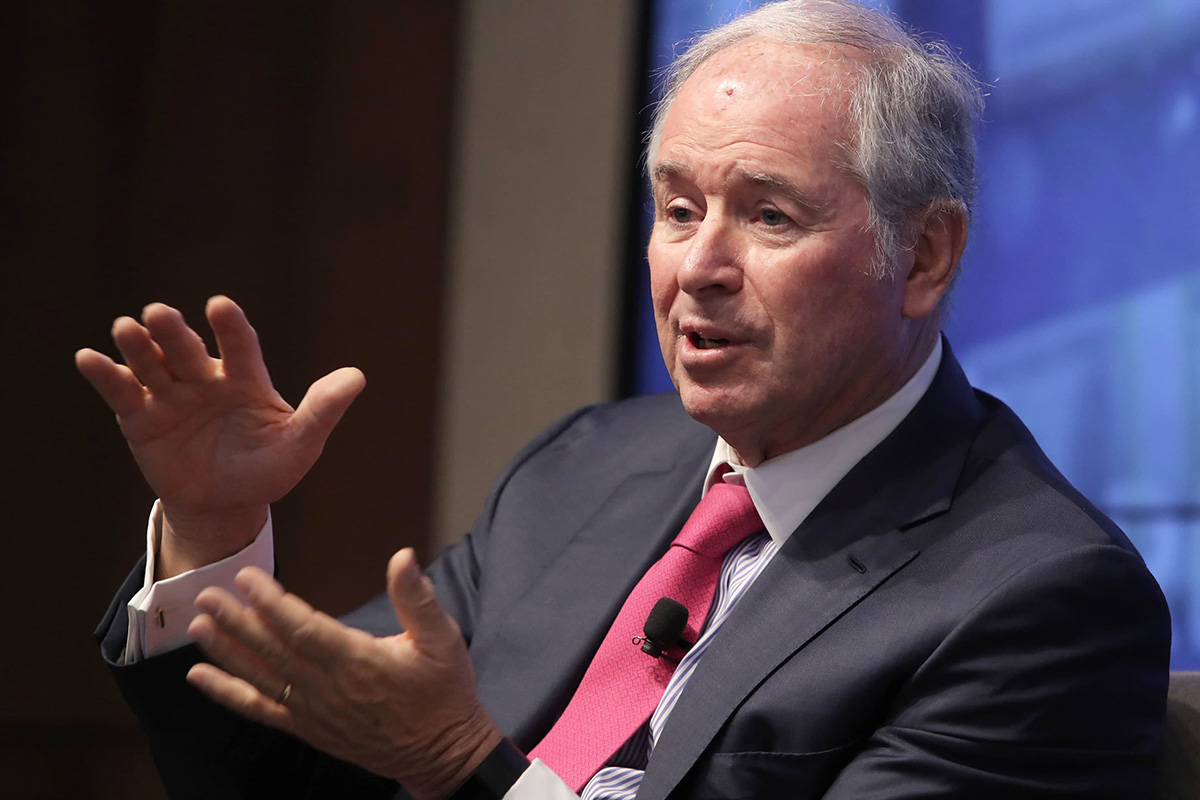

Finance
What Is Dry Powder In Private Equity
Published: January 22, 2024
Learn about the concept of dry powder in private equity and its significance in finance. Understand how it impacts investment strategies and market dynamics.
(Many of the links in this article redirect to a specific reviewed product. Your purchase of these products through affiliate links helps to generate commission for LiveWell, at no extra cost. Learn more)
Table of Contents
Introduction
Understanding the Role of Dry Powder in Private Equity
Private equity has emerged as a dynamic and influential sector within the broader financial landscape. It encompasses a diverse range of investment strategies, each with its unique characteristics and considerations. One crucial aspect that underpins the functioning of private equity is the concept of “dry powder.” This term carries significant weight in the industry, shaping investment decisions and influencing market dynamics. To comprehend the intricacies of private equity, it is essential to delve into the meaning, relevance, and implications of dry powder.
As a fundamental principle, dry powder represents the unallocated capital held by private equity firms for investment purposes. This capital is earmarked for deploying into potential opportunities, such as acquiring companies, providing growth capital, or restructuring existing assets. The term “dry powder” reflects the readiness and flexibility of these funds, signifying their availability for deployment when lucrative investment prospects arise.
Moreover, understanding the role of dry powder is pivotal for investors, industry professionals, and stakeholders seeking to grasp the dynamics of private equity. This article aims to unravel the significance of dry powder in private equity, elucidating its sources, deployment strategies, and overarching impact on the investment landscape. By comprehensively exploring the nuances of dry powder, readers can gain valuable insights into the inner workings of private equity and its pivotal role in driving economic growth and innovation.
Definition of Dry Powder
At its core, the term “dry powder” in the realm of private equity refers to the readily available capital that has been raised but not yet invested in any specific asset or company. This unallocated capital serves as a financial reservoir, enabling private equity firms to swiftly capitalize on strategic opportunities as they arise. The term “dry powder” itself conveys the idea of a metaphorical stockpile of funds that can be deployed at a moment’s notice, akin to the readiness and versatility of dry gunpowder.
From a practical standpoint, dry powder signifies the financial resources that private equity firms have at their disposal for initiating new investments, executing acquisitions, and fueling the growth of portfolio companies. This uninvested capital is a cornerstone of the private equity model, providing firms with the agility and financial muscle to pursue value-creating initiatives in a dynamic and competitive market environment.
Furthermore, the concept of dry powder extends beyond mere liquidity, encompassing the strategic implications of having available funds. It empowers private equity firms to navigate market fluctuations, capitalize on favorable deal structures, and leverage their financial strength to negotiate advantageous terms. This underscores the pivotal role of dry powder in shaping the investment landscape, driving innovation, and fostering economic growth.
As such, the definition of dry powder encapsulates its dual nature as both a financial resource and a strategic asset, embodying the potential for value creation and market influence within the private equity domain. By maintaining a reservoir of uninvested capital, private equity firms can position themselves to seize opportunities, mitigate risks, and actively contribute to the expansion and evolution of the businesses in which they invest.
Importance of Dry Powder in Private Equity
The significance of dry powder in the realm of private equity cannot be overstated, as it serves as a cornerstone of the industry’s operational and strategic prowess. The availability of uninvested capital equips private equity firms with the means to capitalize on emerging opportunities, navigate market volatility, and drive value creation across their investment portfolios.
One of the primary roles of dry powder lies in its capacity to fuel growth and innovation. By maintaining a reservoir of unallocated capital, private equity firms can swiftly inject funds into promising ventures, support the expansion of portfolio companies, and facilitate strategic initiatives that spur economic development. This proactive deployment of dry powder not only stimulates business growth but also fosters job creation, technological advancement, and industry diversification.
Furthermore, dry powder plays a pivotal role in fortifying the resilience of private equity firms amidst market fluctuations and economic uncertainties. The availability of uninvested capital provides a buffer against unforeseen challenges, enabling firms to weather downturns, capitalize on distressed opportunities, and position themselves for long-term success. In essence, dry powder serves as a financial safety net, empowering private equity players to navigate volatile market conditions with confidence and agility.
Moreover, the strategic deployment of dry powder amplifies the influence of private equity in shaping the corporate landscape. With readily available capital at their disposal, firms can proactively pursue acquisitions, execute buyouts, and drive transformative changes within target companies. This proactive approach not only enhances the competitiveness and efficiency of businesses but also contributes to the overall dynamism and evolution of industries.
Additionally, the importance of dry powder extends to its role in driving value creation and returns for investors. By judiciously deploying unallocated capital into high-potential opportunities, private equity firms can generate substantial returns, thereby maximizing the value of their investment portfolios and delivering favorable outcomes for their stakeholders.
In essence, the importance of dry powder in private equity lies in its multifaceted impact on investment agility, market resilience, strategic influence, and value creation. By maintaining a robust reservoir of uninvested capital, private equity firms can proactively shape market dynamics, drive economic growth, and foster innovation, thereby solidifying their position as key drivers of value and progress within the global financial landscape.
Sources of Dry Powder
The accumulation of dry powder within the private equity domain stems from diverse sources, reflecting the multifaceted nature of capital inflows and fundraising strategies employed by private equity firms. Understanding the origins of dry powder is pivotal for comprehending the dynamics of private equity financing and the underlying mechanisms that drive the availability of unallocated capital.
One of the primary sources of dry powder in private equity is the capital raised through fundraising efforts. Private equity firms actively engage in soliciting commitments from institutional investors, pension funds, endowments, sovereign wealth funds, and high-net-worth individuals. These fundraising endeavors yield substantial capital inflows, contributing to the expansion of the firms’ dry powder reserves. The commitments made by investors represent a crucial source of unallocated capital, empowering private equity firms to pursue investment opportunities and execute value-creating initiatives.
Furthermore, the retention of profits and distributions from existing investments serves as a significant driver of dry powder accumulation. As private equity firms realize gains from successful exits, divestitures, and portfolio monetization, a portion of the proceeds is often retained within the firm’s coffers. These retained earnings, coupled with distributions from mature investments, bolster the pool of uninvested capital, augmenting the firms’ capacity to engage in new ventures and strategic transactions.
Moreover, the utilization of leverage and debt financing represents another avenue for bolstering dry powder reserves. Private equity firms often leverage their existing capital base to secure additional funding through debt instruments, such as bank loans, mezzanine financing, and bond issuances. The infusion of borrowed capital into the investment ecosystem amplifies the firms’ dry powder, enabling them to harness a broader financial arsenal for pursuing value-enhancing opportunities and executing transformative transactions.
Additionally, strategic partnerships and co-investment arrangements with like-minded institutional investors and industry stakeholders contribute to the augmentation of dry powder. By forging alliances and co-investment partnerships, private equity firms can pool resources, share risk, and access additional capital for deploying into collaborative ventures and joint investment initiatives. These strategic alliances serve as a catalyst for expanding the firms’ dry powder reserves, fostering synergistic investment endeavors, and amplifying their impact within the private equity landscape.
Ultimately, the sources of dry powder in private equity encompass a spectrum of capital inflows, including fundraising commitments, retained earnings, debt financing, and collaborative partnerships. The convergence of these diverse sources underpins the resilience and agility of private equity firms, enabling them to maintain robust reserves of unallocated capital and actively pursue value-creating opportunities within an ever-evolving market environment.
Deployment of Dry Powder
The strategic deployment of dry powder within the private equity landscape plays a pivotal role in shaping investment outcomes, driving value creation, and fostering economic growth. This proactive allocation of uninvested capital entails a deliberate and discerning approach, wherein private equity firms leverage their financial resources to catalyze transformative initiatives, capitalize on market opportunities, and maximize returns for their stakeholders.
One of the primary avenues for deploying dry powder lies in pursuing new investment opportunities. Private equity firms actively scout for promising ventures, undervalued assets, and growth-stage companies that align with their investment thesis and strategic objectives. By earmarking a portion of their unallocated capital for new investments, firms can infuse vital funding into high-potential businesses, nurture their growth trajectories, and unlock value through strategic partnerships and operational enhancements.
Furthermore, the deployment of dry powder often involves executing add-on acquisitions and bolt-on transactions within existing portfolio companies. This approach enables private equity firms to harness their uninvested capital to support the expansion, diversification, and consolidation of their portfolio holdings. By strategically deploying dry powder into complementary acquisitions, firms can enhance the competitive positioning of their portfolio companies, drive synergies, and amplify the overall value proposition of their investment portfolios.
Moreover, private equity firms utilize their dry powder reserves to navigate market disruptions and capitalize on distressed opportunities. During periods of economic volatility or industry turbulence, unallocated capital serves as a financial lifeline, empowering firms to acquire distressed assets, restructure struggling businesses, and capitalize on favorable market dislocations. This strategic deployment of dry powder enables firms to mitigate risks, capitalize on contrarian opportunities, and position themselves for long-term value creation amidst market uncertainties.
Additionally, the deployment of dry powder extends to the execution of growth capital investments, where firms allocate uninvested capital to fuel the expansion and scaling of their portfolio companies. By injecting funds into growth-oriented initiatives, such as product development, market expansion, and operational optimization, private equity firms can catalyze the evolution and competitiveness of their portfolio businesses, driving sustainable value creation and enhancing their market positioning.
Ultimately, the deployment of dry powder within private equity encompasses a spectrum of strategic initiatives, including new investments, add-on acquisitions, distressed opportunities, and growth capital injections. By judiciously allocating their uninvested capital across these avenues, private equity firms can actively shape market dynamics, drive innovation, and maximize the value of their investment portfolios, thereby solidifying their position as key drivers of economic progress and industry evolution.
Conclusion
As the cornerstone of private equity’s financial agility and strategic prowess, dry powder encapsulates the industry’s capacity to drive innovation, capitalize on opportunities, and foster economic growth. The unallocated capital held by private equity firms serves as a catalyst for value creation, market resilience, and strategic influence, underpinning the industry’s pivotal role in shaping the corporate landscape and driving entrepreneurial dynamism.
By maintaining a reservoir of uninvested capital, private equity firms can proactively navigate market dynamics, capitalize on emerging opportunities, and deploy funds into transformative initiatives that propel business growth and industry evolution. The availability of dry powder empowers firms to pursue new investments, execute add-on acquisitions, capitalize on distressed opportunities, and fuel the expansion of portfolio companies, thereby amplifying their impact within the investment ecosystem.
Moreover, the sources of dry powder, ranging from fundraising commitments to retained earnings and strategic partnerships, reflect the diverse avenues through which private equity firms bolster their unallocated capital reserves. This multifaceted influx of capital underscores the industry’s resilience and adaptability, enabling firms to maintain robust financial resources for driving strategic initiatives and value-creating transactions.
Furthermore, the strategic deployment of dry powder signifies the industry’s proactive approach to capital allocation, wherein firms leverage their financial resources to catalyze growth, drive operational enhancements, and maximize returns for their stakeholders. By judiciously deploying unallocated capital into high-potential opportunities, private equity firms contribute to the expansion and evolution of businesses, fostering job creation, technological advancement, and industry diversification.
In essence, the concept of dry powder within private equity embodies the industry’s commitment to proactive investment, strategic agility, and value-driven decision-making. By maintaining a robust reservoir of uninvested capital and deploying it judiciously, private equity firms continue to shape market dynamics, drive economic progress, and foster innovation, thereby reinforcing their position as key drivers of value and progress within the global financial landscape.














